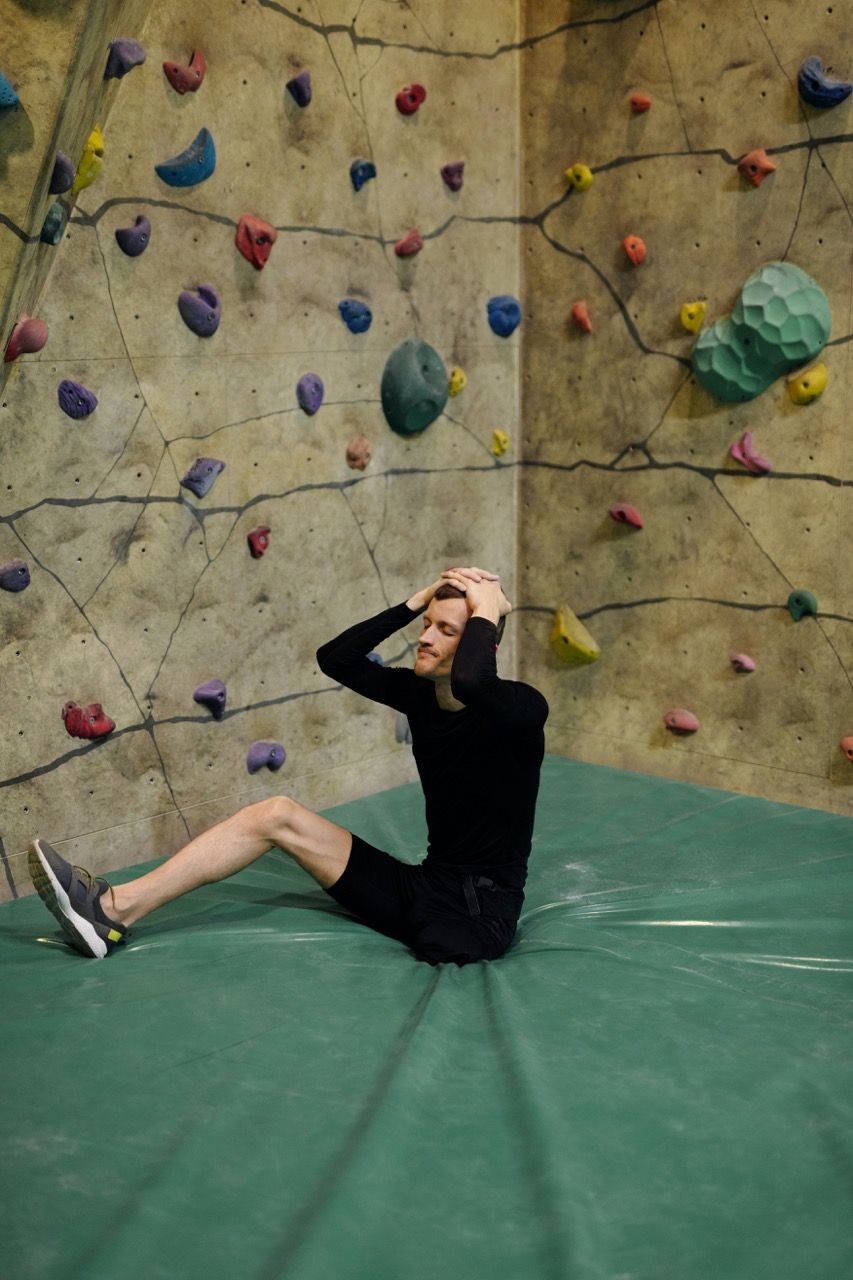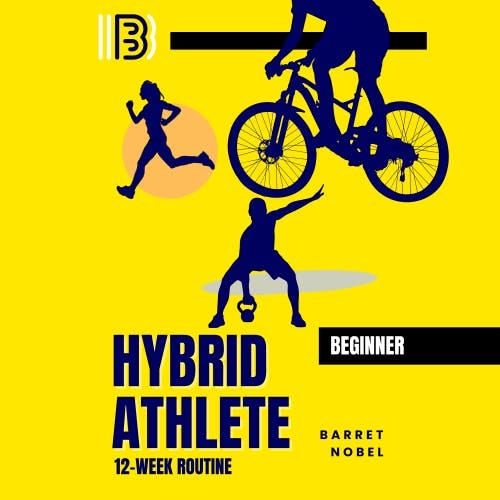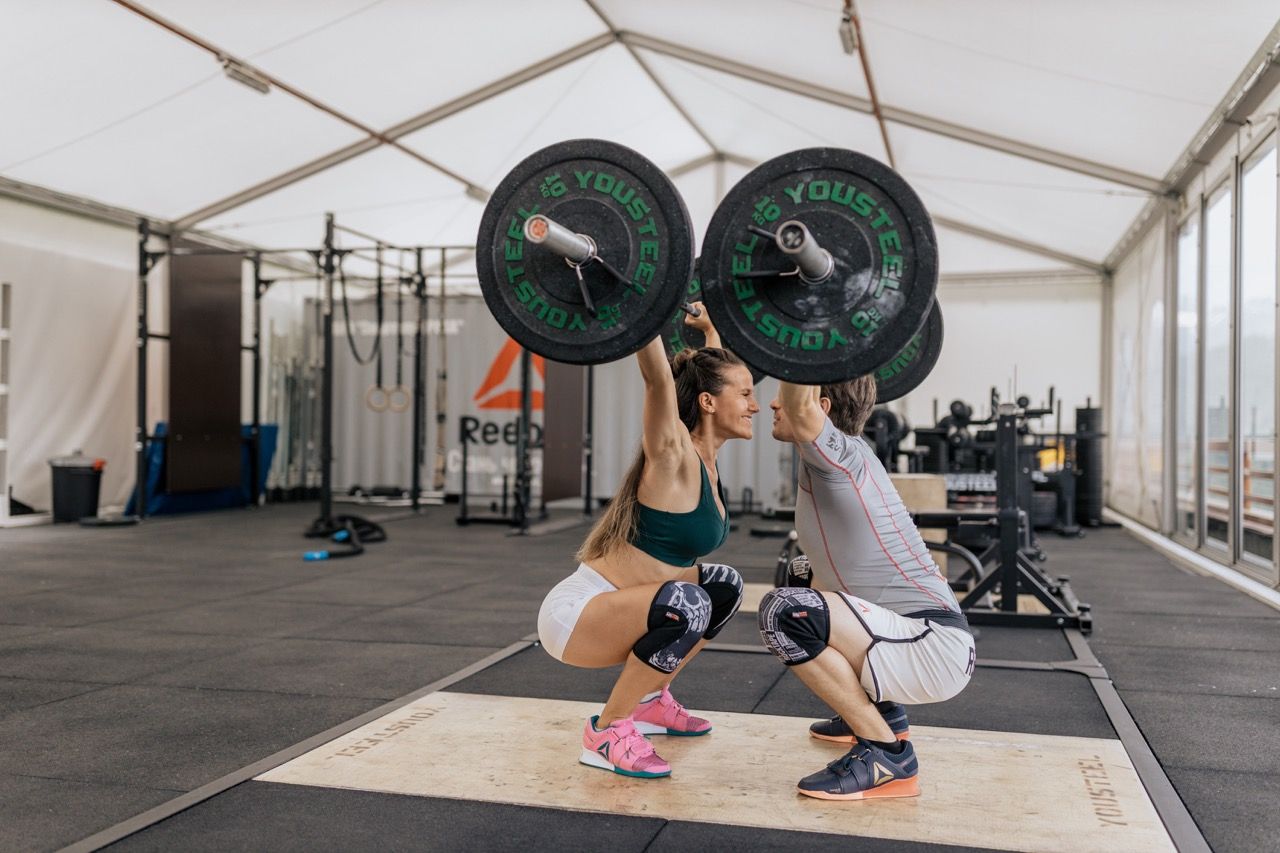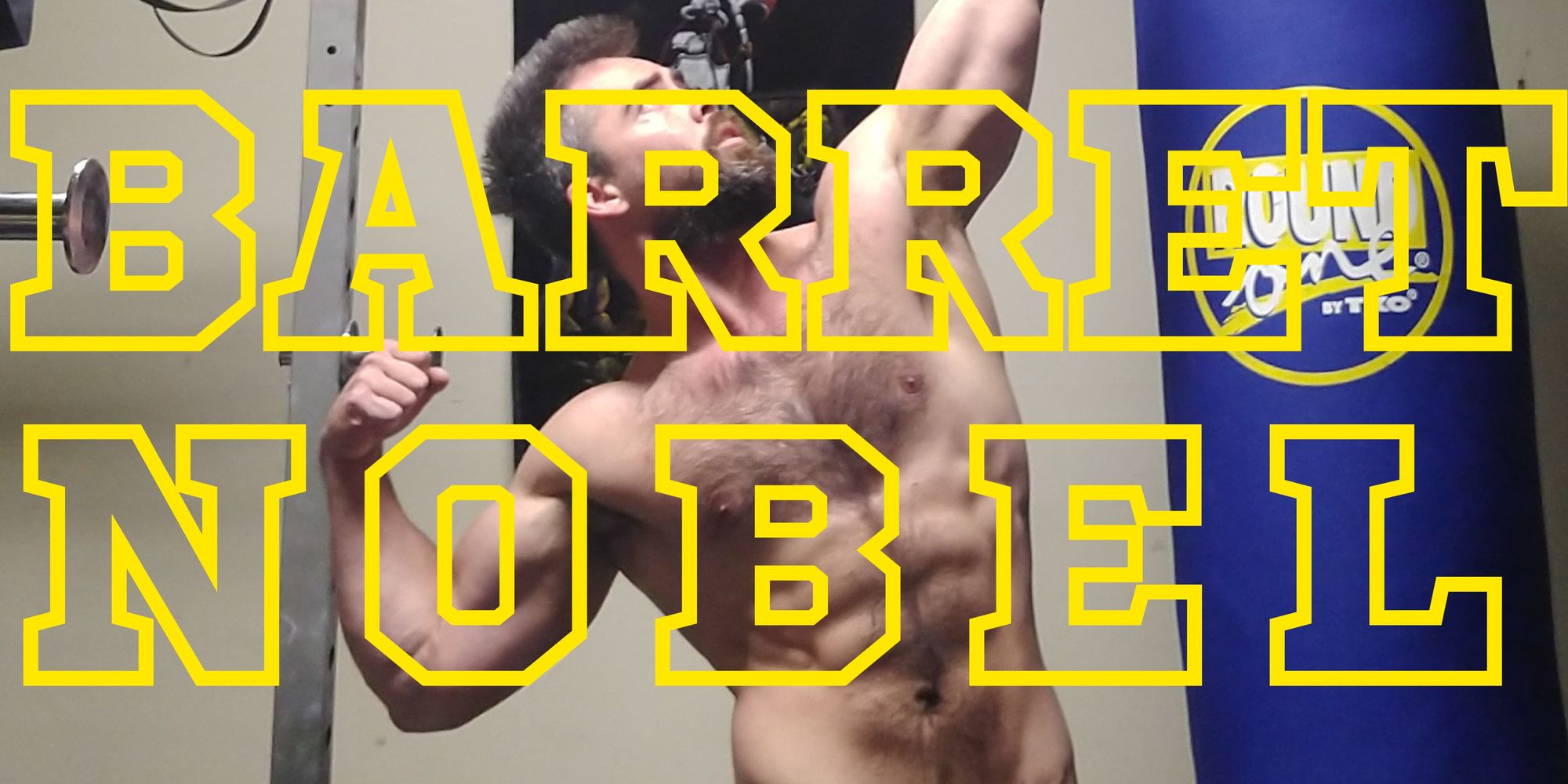10 Hybrid Athlete Training Mistakes You Are Making Without Knowing It (And How to Fix Them)
Improve your athletic performance and reduce the risk of injury by avoiding these 10 common hybrid athlete training mistakes. Learn how to fix them with Hybrid Athlete Pro

Unlocking Your Full Athletic Potential by Avoiding These Common Training Pitfalls
As a hybrid athlete, you must train for different types of exercises, including strength, endurance, and agility. However, many hybrid athletes make mistakes without realizing it, which could hamper their progress and performance. In this article, we will discuss the top ten hybrid athlete training mistakes and how to fix them.
Explore some of the sponsors of this blog and discover cool apps, products, or websites that I'm currently using and loving by visiting the links below 👇
Do Hard Things*: Achieve fitness goals with Fit for Life, a minimalist log book for men and women. Track progress and set monthly goals with expert design.
LMNT: Stay Salty! A tasty electrolyte drink mix that is formulated to help anyone with their electrolyte needs and is perfectly suited to folks fasting or following low-carb, whole-food diets
Hypefury: Schedule & Automate Social Media Marketing Your personal assistant to grow & monetize your Twitter audience
Fancy Hands: My VA of choice! I’m pretty excited to hand off some of my work. Thought you’d be interested too. As a bonus, you'll get 50% off your first month
yourcompany.com: Interested in sponsoring this blog? 📩 → blogSponsor@hybridathletepro.com
1. LFG
As a hybrid athlete, your training routine should incorporate a variety of exercises that target different muscle groups and athletic domains. However, even experienced hybrid athletes can make common training mistakes that hamper their progress and performance. These mistakes can range from neglecting flexibility and mobility training to focusing too much on strength training and overtraining. In this article, we will discuss the top ten hybrid athlete training mistakes and provide tips on how to fix them. By avoiding these mistakes and following our advice, you can optimize your training routine and achieve your fitness goals more effectively.
2. Not having a training plan
Having a well-designed training plan is crucial for hybrid athletes to optimize their performance. Without a plan, it can be challenging to structure your training sessions and track progress accurately. A training plan provides a clear roadmap of what exercises to perform and when to perform them, ensuring that you target all the necessary muscle groups and athletic domains.
When creating your training plan, ensure that it includes a variety of exercises that challenge your body in different ways. Incorporate strength, endurance, and agility training to develop a well-rounded fitness foundation. Additionally, schedule rest days into your plan to allow your body to recover and prevent overtraining.
Creating a training plan can seem overwhelming, especially for beginners. Consider working with a qualified trainer or coach who can help you create a customized plan tailored to your goals and fitness level. A trainer can also help you adjust your plan as needed, ensuring that you continue to make progress and avoid stagnation. By having a well-designed training plan, you can optimize your performance and achieve your fitness goals more efficiently.
If you are looking to begin with your Hybrid Athlete training
I wrote a book for the beginner Hybrid Athlete 👇
Pick up your free copy now!

3. Overtraining
It's not uncommon for hybrid athletes to fall into the trap of thinking that more training is always better. However, overtraining can be counterproductive and even harmful to your progress and overall health. Overtraining can lead to fatigue, injury, and burnout, which can be demotivating and lead to setbacks in your training.
To avoid overtraining, it's essential to schedule rest days into your training plan. Rest days allow your body to recover and repair itself after intense exercise, reducing the risk of injury and helping to improve athletic performance. Rest days also help to prevent burnout, which can occur when you push yourself too hard for too long.
If you're finding it challenging to rest, consider engaging in active recovery activities such as yoga or light swimming. These activities can help to improve blood flow and promote recovery while still giving your body a break from intense exercise. Remember that rest days are just as crucial as training days, and they're an essential part of any well-rounded training program. So, make sure to give your body the time it needs to recover, and you'll be able to perform at your best.

4. Focusing too much on strength training
Strength training is undoubtedly an essential component of hybrid athlete training, as it helps to develop muscular strength and power. We have an excellent article about the differences in bodybuilding and hybrid athletics here -> https://www.hybridathletepro.com/hybrid-athlete-vs-bodybuilder-which-one-is-better-for-your-goals/. However, focusing solely on strength training can be detrimental to your progress and increase your risk of injury. Overemphasizing strength training can lead to muscle imbalances, as some muscles may become stronger than others, leading to postural issues and an increased risk of injury.
To avoid these issues, it's crucial to include a variety of training types in your routine, including endurance and agility training. Endurance training, such as running, cycling, or swimming, can help to improve cardiovascular health and increase your endurance capacity. Agility training, such as plyometrics or ladder drills, can help to improve your ability to change direction quickly and improve your reaction time.
By incorporating a variety of training types, you'll develop a well-rounded fitness foundation that will improve your athletic performance and reduce your risk of injury. When designing your training plan, aim to strike a balance between different training types, ensuring that you're challenging your body in different ways while still allowing for rest and recovery. Remember that building a well-rounded fitness foundation takes time and consistency, so be patient and persistent, and you'll see the results you're after.
5. Neglecting flexibility and mobility training
Flexibility and mobility training are essential components of hybrid athlete training, but they are often overlooked. A lack of flexibility can hinder athletic performance and increase the risk of injury. In contrast, improved flexibility can help to improve range of motion, reduce the risk of injury, and improve athletic performance. You can read a more indepth article about all this here -> https://www.hybridathletepro.com/5-reasons-why-you-should-incorporate-stretching-and-foam-rolling-into-your-hybrid-training/.
Incorporating stretching exercises into your routine is an effective way to improve flexibility and mobility. Dynamic stretching before exercise can help to warm up the muscles and prepare them for movement, reducing the risk of injury. Static stretching after exercise can help to improve flexibility and range of motion, promoting recovery and reducing muscle soreness.
In addition to stretching, incorporating mobility exercises into your routine can help to improve joint range of motion and reduce the risk of injury. Mobility exercises can include foam rolling, joint mobilization, and corrective exercises to address any imbalances or limitations in your movement.
By incorporating flexibility and mobility training into your routine, you'll improve your athletic performance and reduce your risk of injury. Make sure to dedicate time to stretching and mobility exercises, and be patient with the process. Improved flexibility and mobility take time and consistency, so make them a regular part of your training routine, and you'll see the benefits over time.

6. Skipping warm-up and cool-down sessions
Warm-up and cool-down sessions are essential components of any training routine, and they should not be overlooked. Warm-up sessions are designed to prepare the body for exercise, increase blood flow to the muscles, and enhance mobility. Cool-down sessions, on the other hand, help to promote recovery, reduce muscle soreness, and prevent injury.
Skipping warm-up and cool-down sessions can be detrimental to your progress and increase your risk of injury. Without proper warm-up, your muscles and joints may not be adequately prepared for exercise, increasing your risk of strain or sprain. Skipping cool-down can delay the recovery process and increase muscle soreness, making it harder to return to training.
To avoid these issues, make sure to dedicate time to warm-up and cool-down exercises. A good warm-up should consist of light cardio exercises, such as jogging or jumping jacks, to increase blood flow and get the heart rate up. Dynamic stretching exercises can also help to prepare the muscles and joints for movement.
A proper cool-down should include static stretching exercises to improve flexibility and promote recovery. Additionally, foam rolling and self-massage can help to reduce muscle soreness and improve recovery time. By incorporating warm-up and cool-down exercises into your routine, you'll prepare your body for exercise, reduce the risk of injury, and promote recovery. So, make sure not to skip these essential components of your training routine.

7. Improper form during exercises
Performing exercises with improper form can be detrimental to your progress and increase your risk of injury. Poor form can lead to muscle imbalances, strain, and sprain, and reduce the effectiveness of the exercise. It's crucial to learn proper form for each exercise to ensure maximum benefits and minimize the risk of injury.
Learning proper form can take time and practice, but it's essential to dedicate time to it. Working with a qualified trainer or coach can help you learn proper form more quickly and effectively. A trainer can also help you identify any imbalances or limitations in your movement and provide corrective exercises to address them.
When learning proper form, make sure to start with light weights and focus on technique before increasing the intensity. Proper form should involve maintaining a neutral spine, engaging the correct muscles, and performing the movement through a full range of motion. Don't rush the process, and be patient with yourself as you learn proper form.
By taking the time to learn proper form, you'll reduce your risk of injury, improve the effectiveness of the exercise, and achieve your fitness goals more efficiently. Make sure to practice proper form regularly, and incorporate corrective exercises into your routine as needed. With patience and persistence, you'll master proper form and improve your athletic performance over time.
8. Not getting enough rest and recovery
Rest and recovery are essential components of any training routine, and they should not be overlooked. The body needs time to recover and repair itself after intense exercise, and without proper rest and recovery, progress can be hindered, and the risk of injury can increase.
One of the most critical components of rest and recovery is sleep. Lack of sleep can affect athletic performance by decreasing reaction time, reducing endurance capacity, and increasing the risk of injury. Aim to get at least 7-8 hours of sleep per night, and make sure to prioritize rest and recovery as much as you prioritize training.
In addition to sleep, active recovery activities can help to improve blood flow, promote recovery, and reduce muscle soreness. Active recovery can include low-intensity activities such as yoga, stretching, or light swimming, that help to promote blood flow to the muscles and aid in recovery.
Remember that rest and recovery are essential components of any well-rounded training routine. Make sure to prioritize sleep and active recovery activities, and avoid overtraining. By allowing your body to rest and recover, you'll improve your athletic performance and reduce the risk of injury, ultimately leading to better progress over time.
9. Not tracking progress
Tracking progress is a crucial component of any training routine, and it can help to keep you motivated and measure results effectively. Without tracking progress, it can be challenging to identify weaknesses, monitor progress, and adjust your training routine accordingly.
To track progress, consider using a journal or fitness app that allows you to record your training sessions and progress. Journals can help to keep track of your exercises, sets, and reps, while fitness apps can provide more in-depth metrics such as heart rate, calories burned, and distance covered. By tracking progress, you'll be able to monitor your progress and identify areas where you need to improve.
Tracking progress can also help to keep you motivated, as you'll be able to see the results of your hard work over time. Seeing improvements in your strength, endurance, or agility can be incredibly motivating and help you stay committed to your training routine.
Remember to review your progress regularly and adjust your training routine accordingly. By doing so, you'll be able to optimize your training routine and achieve your fitness goals more effectively. Tracking progress is an essential part of any training routine, so make sure to prioritize it, and you'll see the results over time.
Take control of your fitness journey with Fit for Life the expert-designed minimalist fitness log book for men and women.
Designed by fitness experts, this comprehensive log book is the perfect companion for your workouts. It helps you:
* Track progress
* Set and achieve monthly goals
* Monitor momentum

10. Ignoring nutrition and hydration
Proper nutrition and hydration are essential components of any training routine, and they should not be ignored. Ignoring nutrition and hydration can lead to fatigue, decreased performance, and an increased risk of injury. To optimize your athletic performance and overall health, it's crucial to prioritize proper nutrition and hydration. A more in-depth article about hybrid athlete nutrition is here -> https://www.hybridathletepro.com/the-best-foods-to-fuel-your-hybrid-athlete-training/.
Aim to consume a balanced diet that includes a variety of nutrient-dense foods such as lean proteins, complex carbohydrates, and healthy fats. These foods provide the energy and nutrients your body needs to perform at its best, helping you to train harder, recover faster, and reduce the risk of injury.
In addition to proper nutrition, hydration is also crucial for athletic performance. Dehydration can lead to decreased endurance capacity, increased fatigue, and muscle cramps. Aim to drink at least 8-10 glasses of water per day, and make sure to hydrate before, during, and after exercise.
Remember that nutrition and hydration are not one-size-fits-all, and it's crucial to customize your diet and hydration plan to your specific needs and goals. Consider working with a registered dietitian or sports nutritionist who can help you design a personalized nutrition plan that aligns with your training routine and goals.
By prioritizing proper nutrition and hydration, you'll optimize your athletic performance and reduce your risk of injury. Make sure to incorporate nutrient-dense foods and hydrate regularly, and you'll see the results over time.
That's a wrap
Hybrid athletes have unique training needs that require a well-rounded training routine. Avoiding common training mistakes such as overtraining, neglecting rest and recovery, and ignoring pre-existing injuries can help to improve athletic performance and reduce the risk of injury. By incorporating a variety of training types, including strength, endurance, agility, flexibility, and mobility, you'll develop a well-rounded fitness foundation that will help you achieve your fitness goals. Proper nutrition and hydration, rest and recovery, and mental training are also crucial components of any well-rounded training routine. By prioritizing these components and avoiding common training mistakes, you'll be well on your way to achieving your fitness goals and becoming a better hybrid athlete.
FAQs:
How often should I rest when training as a hybrid athlete?
Rest is an essential component of any training routine, and as a hybrid athlete, you should aim to rest at least one or two days per week. Rest days allow your body to recover and repair itself after intense exercise, reducing the risk of injury and improving athletic performance over time.
Can I incorporate other sports into my hybrid training routine?
Absolutely! Incorporating other sports into your hybrid training routine can be an effective way to improve your overall athletic performance. Consider incorporating activities such as rock climbing, swimming, or martial arts into your routine to challenge your body in new ways.
How do I know if I'm overtraining?
Overtraining can be detrimental to progress and increase the risk of injury. Signs of overtraining can include fatigue, decreased performance, persistent muscle soreness, and an increased risk of injury. If you suspect you may be overtraining, consider taking a break from training or reducing the intensity of your training routine.
Can I train as a hybrid athlete if I have pre-existing injuries?
Yes, but it's crucial to address any pre-existing injuries before starting a new training routine. Consult with a healthcare professional, such as a physical therapist or sports medicine doctor, to identify any pre-existing injuries and develop a plan to address them. Modifying your training routine accordingly can help to reduce the risk of further injury and improve athletic performance over time.
How important is mental training for hybrid athletes?
Mental training is just as crucial as physical training for hybrid athletes. Incorporating mental training techniques such as visualization, goal-setting, and positive self-talk can help to improve focus, motivation, and overall athletic performance. Don't neglect mental training as part of your overall training routine.
If you're a regular ol' hybrid athlete, you might fall in love with my Tubes channel 👇
https://www.youtube.com/@BarretNobelFitness
It is not only about fitness, it is about life in general. I try to inspire regular people. Check it and subscribe to get notified when new vids come out 🤙
Thanks for reading 🙏!
Don't forget to follow me on our social media for more tips, inspiration and community support! You can find me on Instagram, Facebook, Twitter and TikTok under the handle @BarretNobelFit.
See you in the next post!


* Affiliate link
